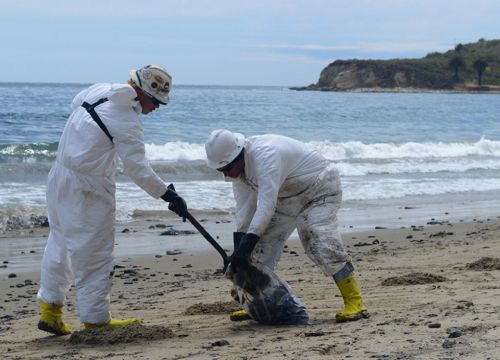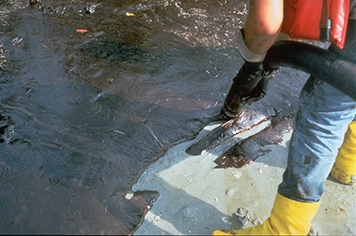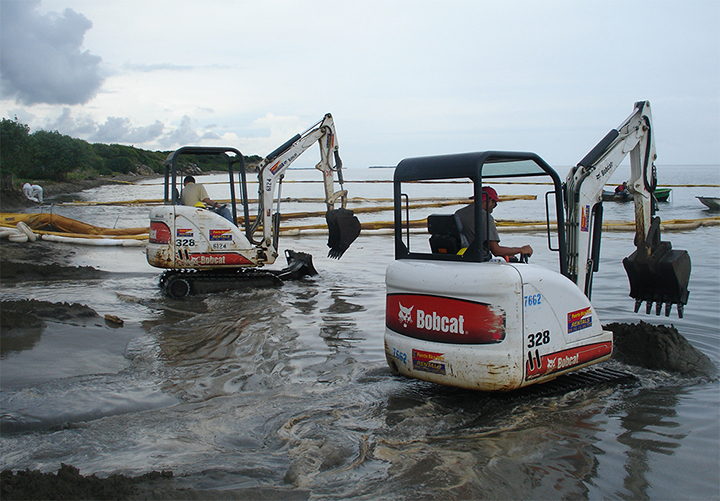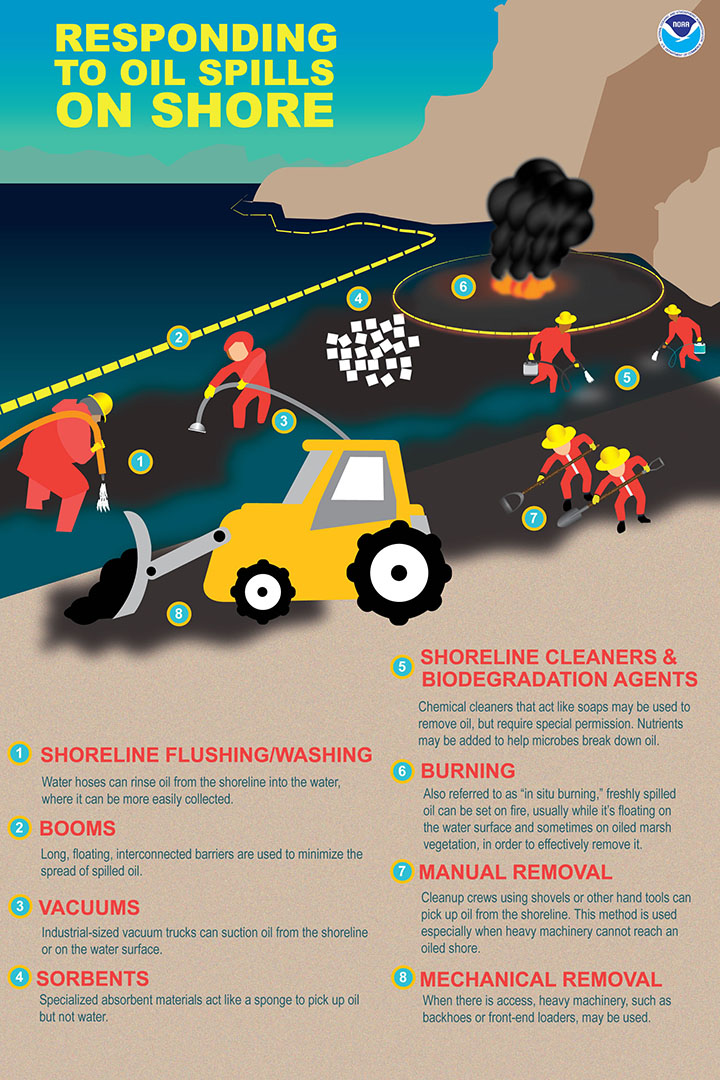How Do Oil Spills Get Cleaned up on Shore?

OCTOBER 7, 2015 -- We often say that no two oil spills are alike, but one thing spills have in common is that cleaning oil off of shorelines is a messy business.
If a ship sinks or an oil pipeline ruptures, the primary goals of spill responders are to contain the oil source to stop any (more) oil from leaking and to prevent already spilled oil from spreading.
However, weather conditions and ocean currents may overwhelm containment booms and other offshore oil spill response strategies.
That means escaping oil may reach shorelines both near to and far from the initial oil spill location.
But when oil stains shorelines, what methods and equipment do responders use to remove it? And how is that different from cleaning up oil out at sea?
Here at NOAA, we have a library full of spill response manuals, technical reports, scientific journal articles, job aids, case histories, and guidance documents describing the methods used to clean up shorelines. And after every major oil spill there are advances in shoreline cleanup methods and equipment.
Here we present some commonly used shoreline cleanup options. Keep in mind that all response options, including what responders call "natural recovery" (letting oil break down naturally in the environment), have potential trade-offs. This means we have to take into consideration the impact of the cleanup methods themselves as we assess the overall environmental impacts of any action.
There are, of course, nuances in cleanup strategies at every oil spill that reflect the specific oil type, local environmental conditions, shoreline habitats, shore access, and a host of safety and logistical considerations. These variables will influence the particular cleanup strategy responders use at any one spill.
And at most oil spills, a combination of cleanup methods will be used (but not necessarily in the order shown here). Let's take a look at each of these methods.
1. Shoreline Flushing: This method uses water to remove or refloat stranded oil, which allows it to be more easily recovered as a slick on the water. One of the lessons learned from the 1989 Exxon Valdez oil spill was to be very careful about water pressure and temperature to avoid causing more harm to the shoreline.
2. Booms: These long, floating barriers are used to keep spilled oil off the beach, or to collect it after being flushed from the beach into the immediate waters.
3. Vacuums: Large industrial vacuums can suction oil off the beach or shoreline vegetation.
4. Sorbents: These specialized materials, which can take forms such as square pads or long booms, are engineered to absorb oil but not water.


5. Shoreline cleaners and bioremediation agents: There are a variety of chemical cleaners for oiled shorelines that usually require special approval for their use. Surface washing agents [PDF] are used to soften and lift oil off of surfaces or structures that have been oiled, such as beach rocks, docks, and riprap. Bioremediation agents, on the other hand, often take the form of fertilizers that help speed up natural microbial degradation processes. However, conventional cleanup methods (e.g., booms and sorbents) typically are used first to their fullest extent to remove the worst oiling, while these alternative measures usually play a secondary role (if any).
6. Burning: Responders sometimes will perform controlled burns, also referred to as "in situ burning," of freshly spilled oil floating on the water's surface or on marsh vegetation.
7. Manual recovery: This method involves using good old buckets, shovels, rakes, and other hand tools to remove oil from shorelines. It is very labor-intensive but is often a primary tool for a response when access for larger equipment is impractical, such as on remote beaches or those without road access.
8. Mechanical removal: When access is possible and won't cause too much damage to the shoreline, responders may bring in heavy machinery, such as back hoes or front-end loaders, to scoop up and haul away oiled materials in bulk.


